
Chemistry-Didactics-Ecology-Metrology
Scope & Guideline
Innovating Education Through Environmental Insights
Introduction
Aims and Scopes
- Interdisciplinary Research in Chemistry and Education:
The journal emphasizes the intersection of chemistry with educational practices, exploring innovative teaching methodologies, such as inquiry-based learning and virtual laboratories, to enhance the learning experience in chemistry education. - Environmental Chemistry and Pollution:
A core focus is on the analysis and remediation of environmental pollutants, particularly heavy metals and pharmaceuticals, highlighting the journal's commitment to addressing environmental challenges and promoting sustainable practices. - Health and Safety in Chemistry:
The journal places importance on health hazards related to chemical exposure, including studies on road dust and safety assessments in educational settings, reflecting a broader concern for public health in the context of chemistry. - Sustainable Development and Science Communication:
It incorporates themes of sustainable development and the role of science communication in informing society about environmental issues, aiming to foster a more informed public regarding scientific advancements and ecological responsibilities.
Trending and Emerging
- Focus on Environmental Contaminants of Emerging Concern:
There is an increasing emphasis on the occurrence and remediation of environmental contaminants, particularly pharmaceuticals and their effects on ecosystems, highlighting the urgent need for research in this area as global awareness of these issues rises. - Integration of Technology in Education:
The rise of virtual laboratories and the use of microcomputers in STEM education reflects an emerging trend towards utilizing technology to facilitate learning, especially in the context of remote education and enhanced interactive experiences. - Health Risks Associated with Environmental Factors:
Recent studies focusing on health hazards related to environmental pollution, such as fine road dust, demonstrate a growing trend towards understanding the impact of environmental factors on public health, which is becoming increasingly relevant in contemporary research. - Sustainable Practices and Renewable Energy:
The exploration of sustainable practices, including the challenges related to renewable energy and sustainable digitalization, indicates a shift towards addressing climate change and promoting sustainable development within the scientific community.
Declining or Waning
- Traditional Chemical Education Methods:
There is a noticeable decrease in publications focused on conventional pedagogical approaches in chemistry education, suggesting a shift towards more innovative and technology-driven methods. - General Environmental Chemistry Topics:
Broader topics in environmental chemistry, such as general pollution studies without specific focus on emerging contaminants, seem to be less frequently addressed, indicating a more targeted approach to current environmental issues. - Historical Perspectives in Chemistry:
Themes centered around historical analysis, such as the historical significance of chemical discoveries, are becoming less common, possibly overshadowed by contemporary issues and applied research in the field.
Similar Journals
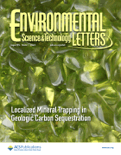
Environmental Science & Technology Letters
Unlocking innovative solutions to ecological challenges.Environmental Science & Technology Letters, published by the American Chemical Society, stands as a premier journal in the realm of environmental science and technology, focusing on pivotal studies that address pressing environmental challenges. With an impressive Q1 ranking in multiple categories including Ecology, Environmental Chemistry, and Pollution, this journal maintains a position of excellence within its field, achieving Scopus ranks that place it in the top percentile of Environmental Science disciplines. Although not open access, Environmental Science & Technology Letters offers vital insights and cutting-edge research that contribute significantly to the understanding and management of environmental issues. The journal’s objectives include disseminating ground-breaking findings and promoting discussions that lead to sustainable solutions. With convergence from 2013 to 2024, it continues to serve as an essential resource for researchers, professionals, and students committed to advancing knowledge and innovation in environmental science.

Toxics
Fostering collaboration in the fight against toxins.Toxics is a leading international journal published by MDPI that has been dedicated to advancing the knowledge in the fields of toxicology, environmental health, and chemical safety since its inception in 2013. With an impressive Open Access model, it ensures that all research findings are readily available to a global audience, fostering collaboration and innovation across academia and industry. The journal is esteemed for its rigorous peer-review process and holds notable rankings, including Q1 status in Chemical Health and Safety and Q2 in both Health, Toxicology and Mutagenesis and Toxicology, reflecting its impact on critical research areas. Based in Basel, Switzerland, Toxics provides a platform for researchers, professionals, and students to disseminate significant findings on the implications of toxic substances in health and the environment, aiming to improve public health outcomes and inform regulatory decisions. With its ongoing commitment to high-quality research and relevant access options, Toxics continues to be an essential resource in the domain of toxicology and environmental sciences.

Revista Virtual de Quimica
Fostering Collaboration in Chemical ResearchRevista Virtual de Quimica, published by the SOC BRASILEIRA QUIMICA, is a dynamic online journal based in Brazil, dedicated to promoting innovative research in the field of chemistry and related disciplines. Established in 2011, the journal has made significant strides in contributing to the academic landscape, receiving an impact factor that highlights its relevance, although it currently holds a Q4 quartile ranking in the miscellaneous category of Chemistry and Mathematics as of 2023. The journal is committed to open access, ensuring that scholarly articles are readily available to researchers, professionals, and students worldwide. Its focus encompasses diverse areas within general chemistry, aiming to foster knowledge sharing and collaboration among the scientific community. By providing a platform for high-quality research publications, Revista Virtual de Quimica stands as an essential resource for advancing chemical sciences and encouraging interdisciplinary studies.
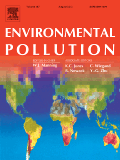
ENVIRONMENTAL POLLUTION
Illuminating the path to environmental health and safety.Environmental Pollution, published by Elsevier Science Ltd, stands at the forefront of research related to environmental contaminants and their effects on health and ecosystems. With an impressive impact factor reflected in its Q1 rankings across various categories including Health, Toxicology, and Pollution, this journal is a pivotal resource for academics and professionals in the fields of environmental science and toxicology. The journal, established in 1973, continues to disseminate high-quality articles that explore the implications of pollution and advance knowledge on toxicological impacts and mitigation strategies. Although it is not an open-access journal, it offers robust visibility within the scientific community, ensuring vital research reaches those who need it most. Researchers, students, and professionals dedicated to understanding and addressing the challenges of environmental pollution will find Environmental Pollution to be an indispensable platform for their work, guiding the ongoing dialogue on sustainable practices and public health protection.

Journal of Environmental Science and Health Part C-Toxicology and Carcinogenesis
Pioneering Research for a Healthier TomorrowThe Journal of Environmental Science and Health Part C-Toxicology and Carcinogenesis is a vital publication in the fields of environmental science, toxicology, and cancer research, published by Taylor & Francis Inc. With an ISSN of 2689-6583 and E-ISSN 2689-6591, this journal provides a platform for peer-reviewed research that explores the intersection of environmental factors and health outcomes, particularly focusing on toxicological and carcinogenic impacts. Though it does not currently offer Open Access, it remains a significant contributor to academia with its current ranking in the Q4 category for Cancer Research and Q3 in Health, Toxicology and Mutagenesis. The journal has converged from 2020 to 2024 and aims to disseminate pioneering studies that inform public health policies and foster a deeper understanding of environmental toxins. Aspiring researchers, professionals, and students will find this journal to be an essential resource for the latest findings and discussions within these critical fields.
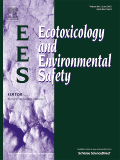
ECOTOXICOLOGY AND ENVIRONMENTAL SAFETY
Championing ecological integrity through rigorous scientific inquiry.ECOTOXICOLOGY AND ENVIRONMENTAL SAFETY, published by Academic Press Inc. Elsevier Science, stands as a premier journal in the field of environmental science, specializing in the intricate relationships between toxic substances and ecological systems. With a commendable impact factor and recognized as a Q1 journal in various categories including Health, Toxicology and Mutagenesis, and Public Health, it consistently ranks among the top publications in Scopus, placing it in the 96th percentile for Medicine and Public Health. Established in 1977, this journal addresses critical issues related to environmental safety and pollution, making it an essential resource for researchers, professionals, and students alike. Although it does not offer an open access option, the journal’s commitment to publishing rigorous and impactful research makes it a vital platform for advancing the understanding of ecotoxicological risk assessments and environmental protection strategies. For those dedicated to the intersection of science and public health, ECOTOXICOLOGY AND ENVIRONMENTAL SAFETY serves as a beacon of knowledge and innovative research.
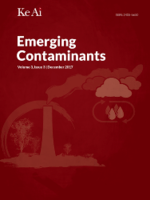
Emerging Contaminants
Bridging research and real-world impact on health.Emerging Contaminants is a leading international journal dedicated to the exploration and analysis of novel pollutants, their effects, and the methodologies for their detection and remediation. Published by KEAI PUBLISHING LTD in China, this Open Access journal has been at the forefront of scientific discourse since its inception in 2015, allowing unrestricted access to cutting-edge research. With an impressive categorization in the top Q1 quartile across diverse fields, including Health, Toxicology and Mutagenesis, and Public Health, it ranks remarkably high—41st out of 665 in Public Health and 10th out of 133 in Toxicology according to Scopus metrics, demonstrating its vital role in advancing our understanding of environmental health risks. By bridging the gap between academia and practical applications, Emerging Contaminants not only enriches the scientific community but also serves as an essential resource for policymakers and industry leaders seeking effective solutions to environmental challenges. Researchers, professionals, and students alike are encouraged to engage with the journal’s comprehensive studies and findings, contributing to a sustainable future.

Glasnik Hemicara i Tehnologa Bosne i Hercegovine
Advancing Chemistry and Technology for a Brighter FutureGlasnik Hemicara i Tehnologa Bosne i Hercegovine is a distinguished journal dedicated to advancing the fields of chemistry and technology within Bosnia and Herzegovina and beyond. Published by the University of Sarajevo, Faculty of Science, this academic journal offers a platform for the dissemination of original research, reviews, and case studies that contribute to the rich tapestry of knowledge in chemical sciences and technological applications. With a commitment to promoting open access to vital research, Glasnik Hemicara i Tehnologa cultivates an inclusive environment for researchers, professionals, and students alike, fostering collaboration and innovation. Although specific metrics such as impact factor and H index are yet to be established, the journal's role in bridging academia and industry cannot be overstated, making it an essential resource for those engaged in scientific inquiry in the region.
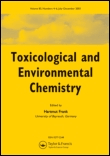
TOXICOLOGICAL AND ENVIRONMENTAL CHEMISTRY
Bridging toxicology and environmental science for a cleaner world.TOXICOLOGICAL AND ENVIRONMENTAL CHEMISTRY is a pivotal journal published by Taylor & Francis Ltd, addressing critical intersections between environmental chemistry and toxicology since its inception in 1979. With its ISSN 0277-2248 and E-ISSN 1029-0486, the journal serves as a platform for rigorous research and innovative methodologies in pollution control, health implications of environmental chemicals, and the broader spectrum of toxicological studies. Although it currently does not offer open access, the journal's impact in the field is underscored by its Category Quartiles rankings in 2023, placing it in Q3 across Environmental Chemistry, Health, Toxicology and Mutagenesis, and Pollution categories. Furthermore, its Scopus rankings reveal its significant role within the scientific community, specifically in areas such as Environmental Science and Toxicology. The journal aspires to foster multidisciplinary dialogue and advance knowledge that contributes to environmental sustainability and public health, making it an essential resource for researchers, professionals, and students dedicated to these fields.

Chemistry Teacher International
Elevating Pedagogical Practices in Chemical SciencesChemistry Teacher International is a prominent peer-reviewed journal dedicated to the field of chemistry education, published by WALTER DE GRUYTER GMBH. With its Open Access policy since 2018, this journal ensures that research is widely disseminated to educators, researchers, and practitioners globally. Located in Berlin, Germany, it aims to promote innovative teaching methodologies and practical applications in chemical sciences. The journal has consistently achieved a Q2 ranking in both the Chemistry (Miscellaneous) and Education categories as of 2023, reflecting its relevance and impact within the academic community. Over its converged years from 2019 to 2024, Chemistry Teacher International fosters a collaborative platform for sharing research, insights, and pedagogical strategies, thereby contributing to the advancement of chemistry education on a global scale.